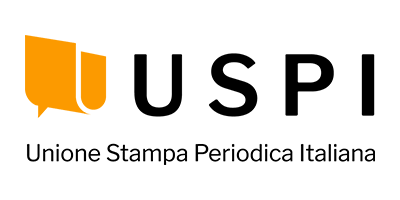High Performance Computing (HPC) and AI Accelerators Global Market Report 2025-2035, with Profiles of 200+ Companies Across the Supply Chain - ResearchAndMarkets.com
The "Global Market for High Performance Computing (HPC) and AI Accelerators 2025-2035" report has been added to ResearchAndMarkets.com's offering. The high-performance computing (HPC) and AI accelera...

DUBLIN: The "Global Market for High Performance Computing (HPC) and AI Accelerators 2025-2035" report has been added to ResearchAndMarkets.com's offering.
The high-performance computing (HPC) and AI accelerator market is experiencing unprecedented growth, driven primarily by the surge in generative AI applications across industries. This sector has transformed from a specialized niche into a cornerstone of modern computing infrastructure, with data center processors forming the backbone of this revolution.
The global data center processor market neared $150 billion in 2024 and is projected to expand dramatically to >$370 billion by 2030, with continued growth expected to push the market well beyond $500 billion by 2035.
This growth trajectory is primarily fuelled by specialized hardware designed to handle the massive computational demands of AI workloads. Graphics Processing Units (GPUs) and AI Application-Specific Integrated Circuits (ASICs) have emerged as the dominant forces in this landscape, experiencing double-digit growth as they power the most demanding generative AI systems.
While traditional Central Processing Units (CPUs) and networking processors like Data Processing Units (DPUs) continue to play essential roles in data center infrastructure with steady growth, they no longer represent the cutting edge of AI computation. Field-Programmable Gate Arrays (FPGAs), once considered promising for AI applications, have seen a significant decline and are expected to remain flat through 2035 as purpose-built AI accelerators have proven more efficient for specific workloads.
The competitive landscape has shifted dramatically since OpenAI's breakthrough innovations in 2022. Nvidia has established clear market dominance with its advanced GPU offerings, particularly the Hopper (H100/H200) and newer Blackwell (B200/B300) architectures. These chips incorporate cutting-edge features like increased on-chip memory capacity - over 250GB of high-bandwidth memory (HBM) - enabling larger AI models with more parameters.
However, major cloud service providers like Google and AWS are pursuing strategic independence through partnerships with Broadcom, Marvell, and Alchip to co-design custom AI ASICs. These systolic array-based custom chips offer advantages over GPUs, including lower total cost of ownership, reduced vendor lock-in risk, and specialized optimization for specific workloads like transformers and recommender systems.
The market has also attracted numerous innovative startups such as Cerebras, Groq, Graphcore, SambaNova, and Untether AI, who are pioneering novel architectures including dataflow-controlled processors, wafer-scale packaging, spatial AI accelerators, and processing-in-memory technologies. This innovation wave has triggered significant merger and acquisition activity as established players seek to incorporate cutting-edge technologies. Technology trends driving this market include the shift toward multi-chiplet architectures, which optimize manufacturing yield while enabling larger dies, and the rapid adoption of advanced process nodes. Current leading-edge CPUs utilize 3nm technology, while GPUs and AI ASICs typically employ 4nm processes, with 3nm expected to arrive as early as 2025 in products like AWS Trainium 3, and sub-1nm nodes projected to emerge by 2035.
Compute performance has grown eightfold since 2020, with ambitious roadmaps like Nvidia's Rubin Ultra targeting 100 PetaFLOPs in FP4 for inference by 2027. By 2035, industry projections suggest that leading AI processors could deliver exascale performance in compact form factors, representing a thousand-fold increase over today's capabilities. Memory technologies have become increasingly critical as AI models expand, with High-Bandwidth Memory (HBM) currently serving as the standard for high-performance AI systems, though several startups are exploring SRAM-based alternatives to further improve performance.
The industry is also witnessing architectural shifts, with Arm-based CPUs gaining momentum against the traditional x86 architecture dominated by Intel and AMD. Meanwhile, cryptocurrency mining operations, with their expertise in cooling solutions and high-power infrastructure, are diversifying into AI by hosting powerful GPU clusters. Looking ahead to 2035, the market is expected to maintain a compound annual growth rate of 10-12% between 2030-2035, with revenues likely exceeding $800 billion as frontier AI development continues to drive demand for exceptional volumes of specialized chips within AI data centers worldwide, and as these technologies become increasingly embedded in critical infrastructure across all sectors of the global economy.
The Global Market for High Performance Computing (HPC) and AI Accelerators 2025-2035 provides an in-depth analysis of the rapidly evolving high-performance computing landscape, with particular focus on the transformative impact of artificial intelligence technologies. This comprehensive report examines market dynamics, technological advancements, competitive strategies, and future trends that will shape this critical sector over the next decade.
With detailed revenue forecasts from 2025 to 2035, the report offers essential intelligence for investors, technology providers, data center operators, and enterprise decision-makers navigating the complex intersection of traditional high-performance computing and cutting-edge AI acceleration technologies.
Contents include:
- Market Size and Growth Projections (2025-2035): Detailed forecasts for AI chips, GPUs, CPUs, AI ASICs, DPUs, network ASICs, and crypto ASICs, covering both shipments and revenues
- Key Technology Inflection Points: Analysis of next-generation node transitions, advanced packaging technologies, and memory system innovations
- Strategic Market Drivers and Challenges: Deep dive into generative AI computing requirements, energy efficiency imperatives, and supply chain vulnerabilities with mitigation strategies
- Investment Outlook and Opportunities: Examination of high-growth market segments and emerging technology areas
- Introduction to HPC and AI: Evolution from historical HPC systems to the exascale computing era, supercomputer vs. hyperscale data center comparisons, and AI computing fundamentals
- Processor Technologies and Architectures: Comprehensive analysis of CPUs (x86, ARM, RISC-V), GPUs, AI ASICs, FPGAs, DPUs, and cryptocurrency computing hardware
- Enabling Technologies: Detailed examination of advanced semiconductor manufacturing, packaging technologies, memory innovations, cooling solutions, networking advancements, and storage technologies
- Market Analysis and Forecasts: Segment-specific projections for GPUs, AI ASICs, CPUs, FPGAs, and DPUs, with end-user segment analysis across cloud providers, HPC centers, enterprises, and telecommunications
- Supply Chain Analysis: Deep dive into semiconductor manufacturing, advanced packaging services, memory suppliers, cooling solution providers, power delivery components, system integrators, and supply chain vulnerabilities
- Technology and Market Trends: Performance scaling trajectories, memory bandwidth challenges, software ecosystem developments, and energy efficiency initiatives
- Application Segments and Use Cases: Specialized infrastructure requirements for AI training, inference deployment, traditional HPC applications, cloud provider infrastructure, and enterprise computing needs
- Company Profiles: Detailed analysis of over 200 companies spanning semiconductor manufacturers, AI chip startups, cloud service providers, and system integrators with tables of other companies in the supply chain also.
Companies Profiled Include:
- Accelsius
- Achronix
- Advanced Micro Devices (AMD)
- AheadComputing
- AiM Future
- Aistorm
- AI21labs
- Ambient Scientific
- Amlogic
- Ampere Computing
- Anaflash
- Analog Inference
- Apple
- AONdevices
- Arm
- Astrus
- Atos
- Amazon Web Services (AWS)
- Axelera AI
- Axera Semiconductor
- Azure Engine
- Baidu
- Baya Systems
- Biren Technology
- Bitmain
- Blumind
- Brainchip Holdings
- ByteDance
- Cambricon Technologies
- Canaan
- Celestial AI
- Cerebras
- Ceremorphic
- CIX Technology
- Clouder
- Cognifiber
- Cohere
- Corerain Technologies
- Corigine
- CoreWeave
- Cornami
- DeepL
- DeepSeek
- Deepx
- Deezer
- DeGirum
- Denglin Technology
- Digital Reality
- d-Matrix
- Easy Technology
- EdgeCortix
- Efinix
- EnCharge AI
- Enflame
- Equinix
- Epic Semiconductors
- Esperanto Technologies
- Etched
- Eviden
- Evomotion
- Expedera
- Flex Logix
- Fulhan
- Fujitsu
- Fungible
- Furiosa
- GlobalFoundries
- GigaByte
- Gowin
- GrAI Matter Labs
- Graphcore
- GreenWaves Technologies
- Groq
- GUC
- Guoxin Micro
- Gwanak Analog
- Gyrfalcon Technology
- Habana
- Hailo
- HiSilicon
- Hitachi
- Hewlett Packard Enterprise
- Horizon Robotics
- Houmo.ai
- HjMicro
- Huawei
- Hygon
- IBM
- Iluvatar CoreX
- Icubecorp
- Inflection AI
- Innatera Nanosystems
- Innosilicon
- Intel
- Inventec
- Intellifusion
- Intelligent Hardware Korea (IHWK)
- Inuitive
- InspireSemi
- iPronics
- Jingjia Micro
- Kalray
- Kinara
- Kneron
- Knuedge
- Krutrim
- Kunlunxin Technology
- Lattice Semiconductor
- Lightelligence
- Lightmatter
- LiSuan Tec
- Loongson Technology
- Luminous Computing
- Lynxi
- Marvell Technology
- MediaTek
- Mellanox
- MemryX
- Meta
- Metax-tech
- Microsoft
- Mistral AI
- Mobilint
- Modular
- Moffett AI
- Moonshot AI
- Moore Threads
- Mythic
- Nano-Core Chip
- NebulaMatrix
- Neuchips
- Neuroblade
- Neureality
- Netronome
- Nextchip
- NTT Communications
- Nuovoton
- Nuvia
- Nvidia
- NXP
- OpenAI
- Oracle
- Optalysys
- Panmnesia
- Penguin Computing
- Pensando
- Perceive
- Pezy Computing
- Phytium
- Positron
- PyTorch
- Qilingxin
- Quadric
- Quanta Cloud Technology
- Quanta Computer
- Qualcomm
- Quillion
- Rackspace
- Rain
- Rapidus
- Rebellions
- Recogni
- Renesas
- Resnics
- Retym
- Rivai
- Rockchip
- Roviero
- Salience Labs
- SambaNova
- Samsung
The high-performance computing and AI accelerator market is experiencing unprecedented transformation driven by the explosive growth of generative AI, increasingly complex computational workloads, and technological innovations across the computing stack. This report provides essential insights into market dynamics, competitive positioning, and strategic opportunities that will define success in this rapidly evolving landscape.
From cutting-edge semiconductor technologies to novel architectures and deployment strategies, this comprehensive analysis equips stakeholders with the knowledge needed to navigate the complex interplay of technical capabilities, market demands, and competitive pressures that characterize this vital sector.
For more information about this report visit https://www.researchandmarkets.com/r/wls8xd
About ResearchAndMarkets.com
ResearchAndMarkets.com is the world's leading source for international market research reports and market data. We provide you with the latest data on international and regional markets, key industries, the top companies, new products and the latest trends.
Fonte: Business Wire
Related news
Last News
RSA at Cybertech Europe 2024
Alaa Abdul Nabi, Vice President, Sales International at RSA presents the innovations the vendor brings to Cybertech as part of a passwordless vision for…
Italian Security Awards 2024: G11 Media honours the best of Italian cybersecurity
G11 Media's SecurityOpenLab magazine rewards excellence in cybersecurity: the best vendors based on user votes
How Austria is making its AI ecosystem grow
Always keeping an European perspective, Austria has developed a thriving AI ecosystem that now can attract talents and companies from other countries
Sparkle and Telsy test Quantum Key Distribution in practice
Successfully completing a Proof of Concept implementation in Athens, the two Italian companies prove that QKD can be easily implemented also in pre-existing…
Most read
Integral AI Unveils World’s First AGI-capable Model
#AGI--Integral AI, a global leader in the development of embodied AGI, today announced the successful testing of the world’s first AGI-capable model.…
Reply Achieves the AWS Agentic AI Specialization and Is Named an Implementation…
Reply [EXM, STAR: REY] announced that it has achieved the Amazon Web Services (AWS) Agentic AI Specialization, a new category within the AWS AI Competency.…
Tecnotree Emerges as CX Catalyst Winner for Impact at The Fast Mode Awards…
Tecnotree, a global digital platform and services leader for AI, 5G, and cloud-native technologies, has won the CX Catalyst award for Impact at The Fast…
CoMotion GLOBAL 2025 Launches in Riyadh: Global Mobility Leaders Unite…
Riyadh is rapidly becoming one of the world's most ambitious urban mobility laboratories, where next-generation technologies move from blueprint to real-world…






